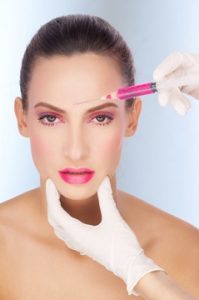 Dr. Paul McCluskey, an experienced plastic surgeon in Atlanta, GA, provides cosmetic and reconstructive surgeries of the face, breast, and body. People in Atlanta who are looking for a cosmetic treatment for eyes may not consider Botox treatment to reduce crow’s feet. Botox can make the eyes appear youthful and rejuvenated, and now the treatment has the stamp of approval from the FDA for removing crow’s feet around the eyes.
Dr. Paul McCluskey, an experienced plastic surgeon in Atlanta, GA, provides cosmetic and reconstructive surgeries of the face, breast, and body. People in Atlanta who are looking for a cosmetic treatment for eyes may not consider Botox treatment to reduce crow’s feet. Botox can make the eyes appear youthful and rejuvenated, and now the treatment has the stamp of approval from the FDA for removing crow’s feet around the eyes.
Since eyes the most delicate external organ of the body, it is always a fantastic idea to choose an experienced cosmetic surgeon or a certified Botox provider in Atlanta or other places to receive Botox cosmetic treatment. Botox is made from botulinum toxin, which is a powerful biological agent that can be used to reduce facial wrinkles and fine lines around the eyes. Refreshed and rested eyes can remove the tired or old look from the face, and make a person appear more youthful.
Cosmetic Application of Botox
Crow’s feet around the eyes are technically called lateral canthal lines, which occur due to the repetitive action of eye muscles over a period of time. Repetitive muscular action that is caused by certain facial expressions such as frowning, smiling, or squinting can lead to lasting wrinkles or lines in the long run. Botox was approved several years ago for the cosmetic treatment of frown lines. It is also approved for the treatment certain medical conditions such as eyelid twitching or blepharospasm.
Chronic migraine and excessive underarm sweating can also be treated with FDA approved Botox treatments. Now the FDA has announced its approval for Botox as an effective temporary treatment to reduce the formation of fine lines and wrinkles around the aging eyes, which are commonly known as crow’s feet. Patients who are bothered by the appearance of crow’s feet around the sides of the eyes can now achieve a smoother and more rejuvenated look with Botox treatment for crow’s feet.
Successful Botox Test Results
Botox treatment for crow’s feet received the approval from FDA only after an extensive study conducted by Allergan, Inc., the drug’s Irvine, CA based manufacturer. The study was conducted on a group of 833 adults. People who participated in the study were selected at random for receiving a Botox placebo injection.
The group which was treated for crow’s feet with Botox revealed a noticeable reduction in crow’s feet compared to the other group that was not treated. Botox treatment may be received from a plastic surgeon in Atlanta, GA or other areas. The effect of the treatment may last for about three to six months. Patients should have realistic expectations in order to achieve better satisfaction from the results.
Crow’s Feet
Due to aging or other factors, fine lines may develop around the eyes that shoot out from the far outside corners of the eyes. These lines are commonly known as crow’s feet. These lines become more visible when we smile because the facial muscles in that area become active on smiling. Skin folds and wrinkles can occur naturally when the contraction of muscles occurs underneath the skin. The skin folds become deeper, depending on the frequency of the smile, and as skin elasticity becomes weaker with age.
Botox can temporarily reduce these fine lines around the eyes. Botox chemical is injected directly into the affected muscles that are causing the formation of lines. The chemical works immediately to block the neural passage between the muscle and the nerve and prevents the muscular contraction. This enables the skin to appear smooth even when a person smiles because the treated muscle does not contract. As a result, the appearance of crow’s feet around the eyes can be diminished significantly.
Precautions
A qualified cosmetic surgeon in Atlanta, GA or other areas may be in the best position to provide Botox treatment. Safety should be the top priority in any cosmetic treatment, and eyes in particular need special care because they are the most sensitive external organ. The FDA warning is included in the Botox label, which says that the toxin’s effect has the risk of spreading to other areas of the body from the injection site. This may lead to symptoms akin to botulism.
The FDA warning also provides an assurance that when Botox is used in recommended dosage, it has never been known to cause such an adverse event. Therefore, signing up and scheduling a Botox treatment session with the precise dosage is the key. Secondly, the toxin must be injected into the targeted muscle with accuracy to achieve the specific, desired results.
Source of News: FDA Press Release
For more information on other services Dr. Paul McCluskey provides visit http://sexualaesthetics.com/
